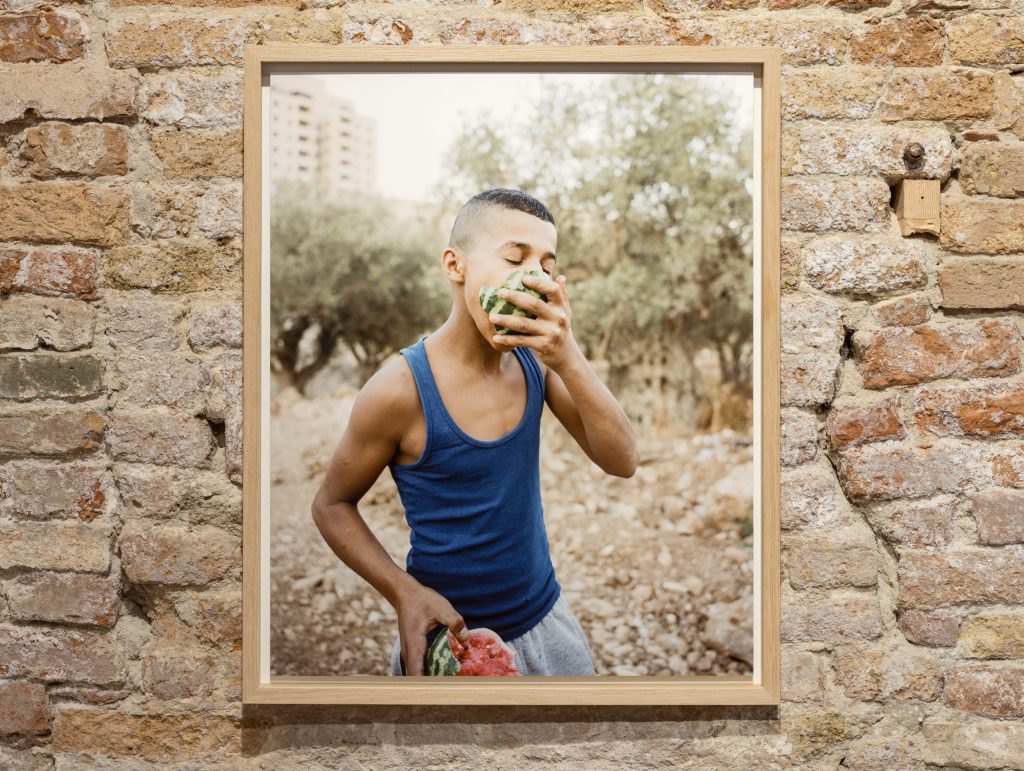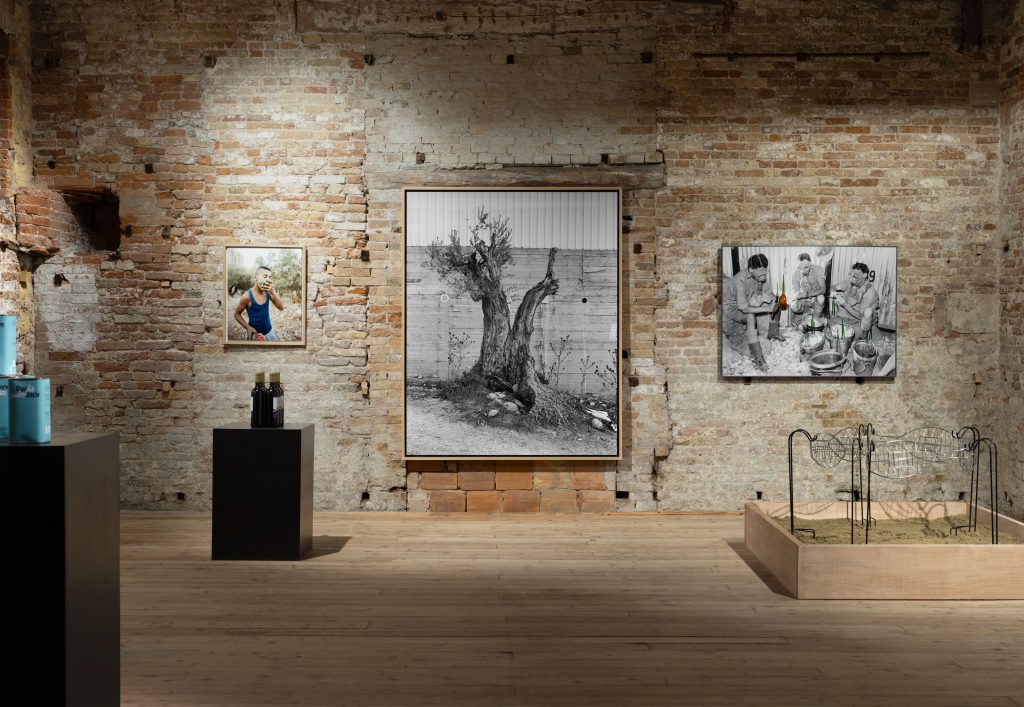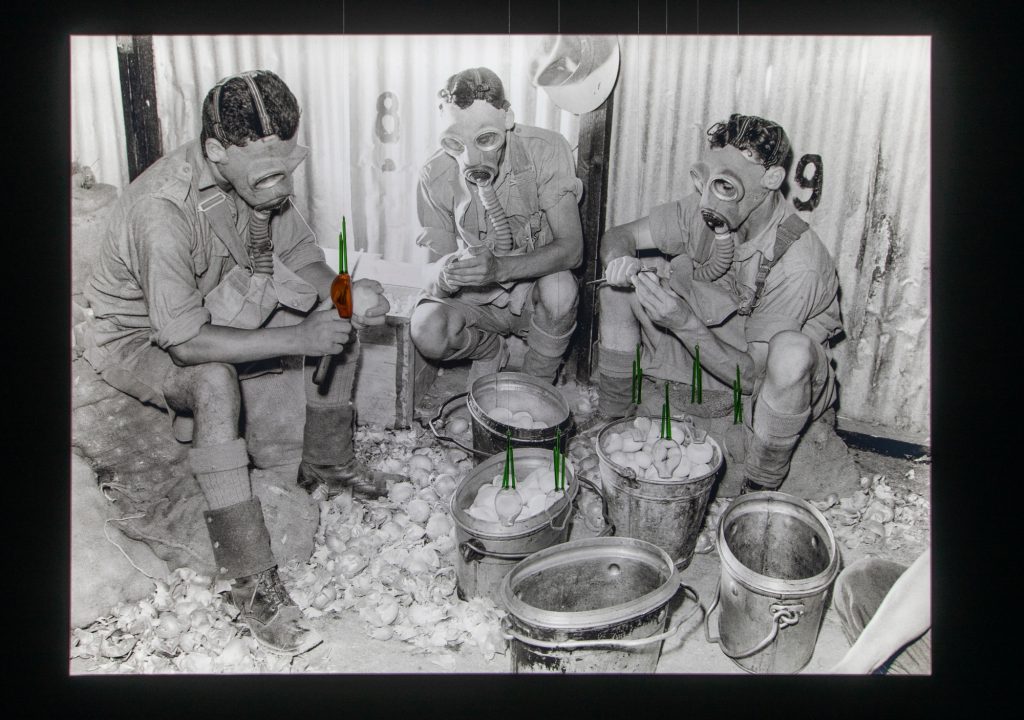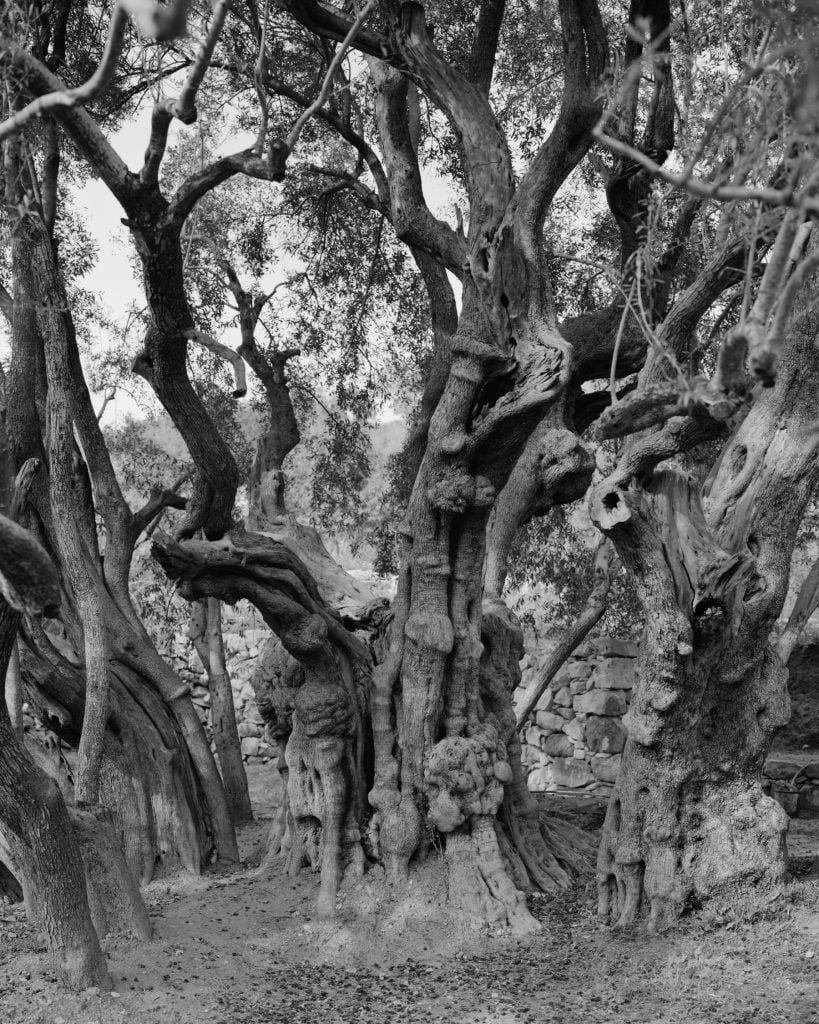Art World
A Powerful Collateral Show in Venice Highlights Palestinians’ Lived Experiences
The show is co-organized by Artists and Allies of Hebron and the Dar Jacir Center for Art and Research.

The show is co-organized by Artists and Allies of Hebron and the Dar Jacir Center for Art and Research.

Jo Lawson-Tancred

Protests have broken out against Israel’s participation at this year’s Venice Biennale, despite the fact that the Israel Pavilion has remained closed to the public during the preview days of the event. Meanwhile, Palestine is once again ineligible for a national pavilion because Italy, like most E.U. countries, does not recognize it as a sovereign state. When the Biennale announced Adriano Pedrosa’s pick of 30 official collateral events last November, all eyes scanned the list to see whether the curator behind this edition’s “Foreigners Everywhere” theme would take the opportunity to spotlight a Palestinian project.
The exhibition he chose, “South West Bank: Landworks, Collective Action and Sound,” features work loosely pertaining to themes of heritage, memory, and attachment to the land by emerging artists as well as more established names like Emily Jacir, Jumanna Manna, Dima Srouji, and Michael Rakowitz. It is co-organized by Artists and Allies of Hebron (AAH) and Dar Jacir for Art and Research and fills the old salt cellar at the Palazzo Contarini Polignac, a small venue with exposed, crumbling brick and thick wooden rafters.
The latter organization, an art center founded in Bethlehem by Emily Jacir, has taken the opportunity to spotlight work by some of its past artist residents. Many of these pieces are startlingly personal and immediate, having been directly inspired by the artist’s own experiences or familial lore. They respond to real, lived events and urgent circumstances, setting this unique show apart from most of the works in the Biennale.

Installation view of “South West Bank,” an official collateral event at the 60th Venice Biennale. Photo: Rafael Gonzalez.
Take, for example, Mohammed Saleh, who started planting seeds in a small local plot he called the Urban Farm in 2019. In 2021, it was burnt down by the Israeli army. “South West Bank” features a vlog in which Saleh himself speaks to audience, sharing updates as he slowly begins to heal the reclaim the razed land. Many of the works included, like this one on a small screen on the wall, are not necessarily immediately eye-catching and cannot simply be rushed past but reward much closer looking.
The Ramallah-based artist Shaima Hamad’s work Dough ball (2024) is an installation of flour and water with an accompanying booklet that was inspired by the death food ritual in Palestine, which often involves making bread. The conceptual performance saw Hamad cultivate the land to recreate a traditional recipe, the act of digging the soil to plant foods becoming a way of contemplating death and loss as well as rituals of remembrance and comfort.
“Traditional food is the most simple way to show the strength of our connection to the land,” she said. “How could you create those recipes without being here? Its related to what we grow. You need time to build a civilization and food is an image of that.”
An additional challenge was the fact that Dar Jacir is housed in a building that was built before the end of the Ottoman Empire and British and Israeli occupation but now sits on one of the most poisoned soils on the planet. While working on the project in Bethlehem, near the border with Israel, Hamad regularly witnessed violence and at one time she had to evacuate due to bombing raids.
Jacir explained that the land has been integral to the work of Dar Jacir since it was founded eight years ago. “Dance, farming, sound, music, and rhythm are forms of poetry, resistance, and sustenance for us,” she said. One artist she is excited to present to audiences in Venice is Sari Khoury (not to be confused with the Palestine-American abstract painter Sari Ibrahim Khoury), whose project Grapes of Wrath (2021) makes a skin-contact wine from the native grapes of a pre-1948 vineyard that grew back through the cracks after it as partially destroyed by the Israeli military.

Dima Srouji, Untitled (Onion Masks) (2023). Photo courtesy of the artist.
Elsewhere, another ex-resident Dima Srouji in collaboration with Jasbir Puar has produced a series of works focusing on objects that “contain within them this duality of destruction and healing simultaneously.” At the Venice show, Untitled (Onion Masks) (2023) is an archival photo from 1940 of Australian soldiers in Gaza wearing gas masks to protect their eyes while peeling onions. It is displayed behind suspended glass blown onions produced by Srouji and local craftsmen in a small town near Ramallah and intended to refer to the viral image of a young boy who put an onion in a medical mask to make a makeshift gas mask in 2018 during the Great March of Return.
“The work was done last year and its meaning has changed because we don’t know what happened to this young boy wearing an onion mask,” said Srouji. “As much courage as you might have, you’re not necessarily safe. An onion mask may protect you from tear gas, but it doesn’t really protect you from drones.”
AAH, the other organization behind “South West Bank,” is a platform co-founded by the activist Issa Amro and the Berlin-based South African artist Adam Broomberg, who is exhibiting his series Anchor in the Landscape, photographic studies of ancient olive trees produced in collaboration with Rafael Gonzalez. The plants are the main source of income for many families and, in Broomberg’s words, a “totemic pole for Palestinian identity” that have been threatened by Israeli occupation for decades. The semi-abstracted black-and-white images capture the trees’ attractively gnarled and knotted forms.

Adam Broomberg with Rafael González, Anchor in the Landscape (2022), photograph of the Al-Badawi olive tree in Palestine. Photo courtesy of the artists.
Broomberg called Hebron a “petri dish of what occupation is like,” noting that, as a Jewish person, he is able to walk on certain streets that his co-founder Amro is not. Born in Apartheid South Africa to a family that had survived the Holocaust, Broomberg said he was sent to a Zionist school but quite quickly began to question both the Apartheid and Zionism. He has since become increasingly involved in the Palestinian art scene. “It’s not a topic I’ve picked out of the air,” he said. “This is my daily life.”
He described the show as “humble,” adding “it doesn’t have the gravitas of the Giardini or the opulence of those huge palazzos.” However, he said, it evolved organically out of “trust, people who trust each other and feel like they are part of a community. That is what’s most hopeful for me.”
“I feel a sense of responsibility to speak on behalf of Palestinian artists in Venice because there are so few,” said the artist Dima Srouji. “That’s unfortunate. Thankfully, Adam was the person who applied for this. What solidarity really looks like is giving us space for our voices to be heard instead of us begging Venice to show us.”
“The theme of the show is not a response to genocide,” she stressed. “It’s a continuation of our practices that we’ve all been doing for years. The art world in Palestine has always responded to occupation. This isn’t new, it’s been embedded in our memories through intergenerational trauma. The only difference for us is the scale of the atrocity.”